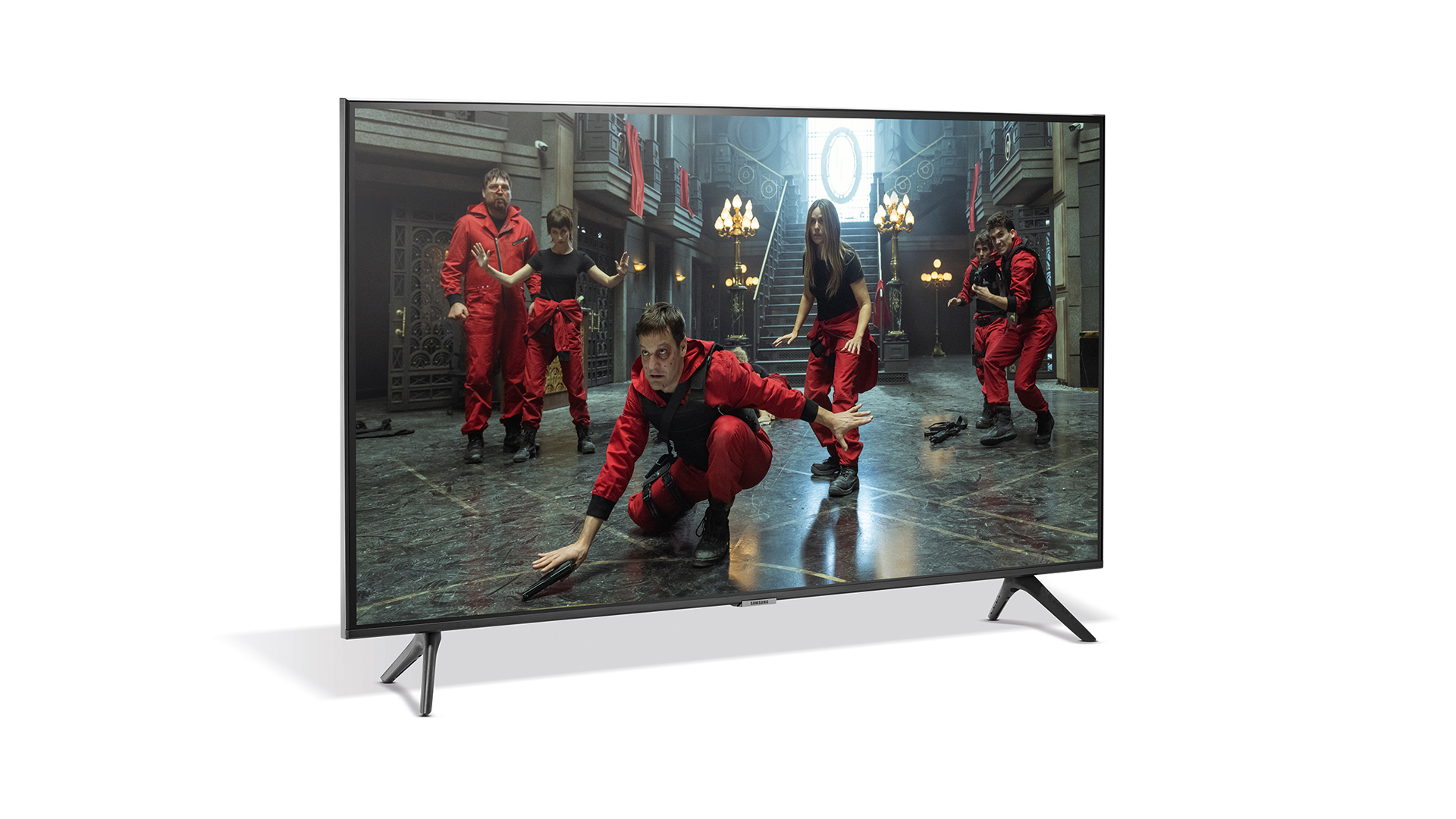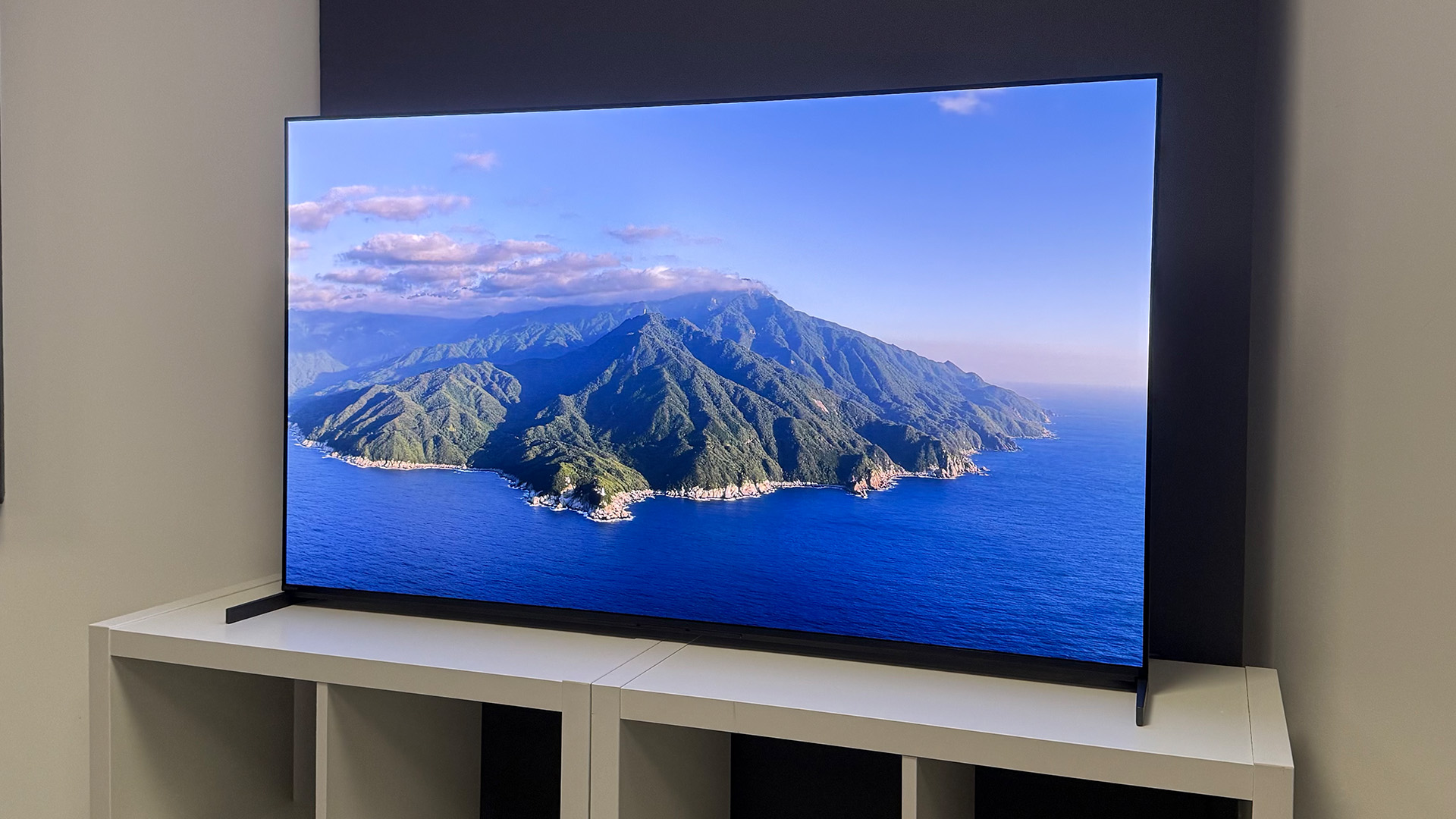What Hi-Fi? Verdict
Samsung’s miniature hero proves you don’t need a bottomless bank account or a cavernous room to enjoy great picture quality
Pros
- +
Balanced, consistent picture quality
- +
Strong smart features
- +
Excellent value for money
Cons
- -
Some mild colour compression
- -
Sound doesn’t project well
- -
Limited gaming features
Why you can trust What Hi-Fi?
Look up ‘unassuming’ in the dictionary and you’ll probably find a picture of the Samsung UE43AU7100. This 43-inch LCD TV doesn’t flaunt a particularly flamboyant design, doesn’t sell for a particularly outrageous price – either high or low – and its features list is certainly no Lord Of The Rings-style epic.
You don’t have to spend long in the UE43AU7100’s company, though, to realise that a TV doesn’t have to be an extrovert to stand out from the crowd. Solid processing and a thoughtful, balanced picture that actually seems to have had some care and attention lavished on it can be more than enough. Especially at the relatively entry-level end of the TV market, where the drive for ever more aggressive pricing has been leading in recent years to increasingly homogenous standards.
Price
The Samsung UE43AU7100 costs £449 in the UK at the time of writing. In keeping with Samsung’s habit of selling slightly different TV ranges in different territories, especially when it comes to its more affordable models, no direct equivalent of the UE43AU7100 is available in the US or Australia.
Stepping up to the 50-inch AU7100 will add £100 to your bill. This is actually quite a lot by today’s standards, making the 43-inch model look like potentially the pricing sweet spot in the AU7100 range. A range which, by the way, incorporates no less than eight screen sizes, all the way up to 85 inches.
The AU7100 is supposedly the cheapest range to benefit from any of Samsung’s so-called Crystal technology, with its enhanced colour performance. However, in a quirk that’s perhaps revealing of their relative qualities, Samsung’s supposedly step-up 43AU8000 TV currently costs exactly the same as the 43AU7100.
There are decently-specced 43-inch rivals around that cost substantially less than the 43AU7100. Hisense’s 43A6GTUK, for instance, is just £329. In fact, Toshiba’s new 50UK3163D delivers a 50-inch picture for the UE43AU7100’s £449 price, and Hisense’s latest 50-inch Roku TV only costs £399. As we’re about to discover, though, cheapness is not the same as value.
Design

Given that we spend what feels like half our lives trying to figure out how to screw TVs onto increasingly complicated stands, the UE43AU7100 deserves a standing ovation for the way its simple feet just slide and lock into place on the TV’s bottom edge without a screw or screwdriver in sight. Forget 8K or micro LED - THIS is the future of TV we’re here for.
The latest hi-fi, home cinema and tech news, reviews, buying advice and deals, direct to your inbox.
Once the euphoria of a screwless build has worn off, though, there’s no denying that the UE43AU7100 feels pretty entry-level in its construction. The lightweight feel and unassuming matt finish of both the feet and the screen frame alert you aggressively to the fact that the bodywork is pretty much completely plastic.
The design wears the plastic reasonably well, though. The feet aren’t distracting and lift the screen high enough to accommodate a soundbar, while the frame around the screen is extremely narrow for this level of the market (even if the set’s rear depth isn’t).
Impressively for its money, the UE43AU7100 ships with two remotes: a ‘standard’, button-filled one, and a sleek ‘smart’ one with a much stripped back button count. Both are very serviceable in their different ways.
Features
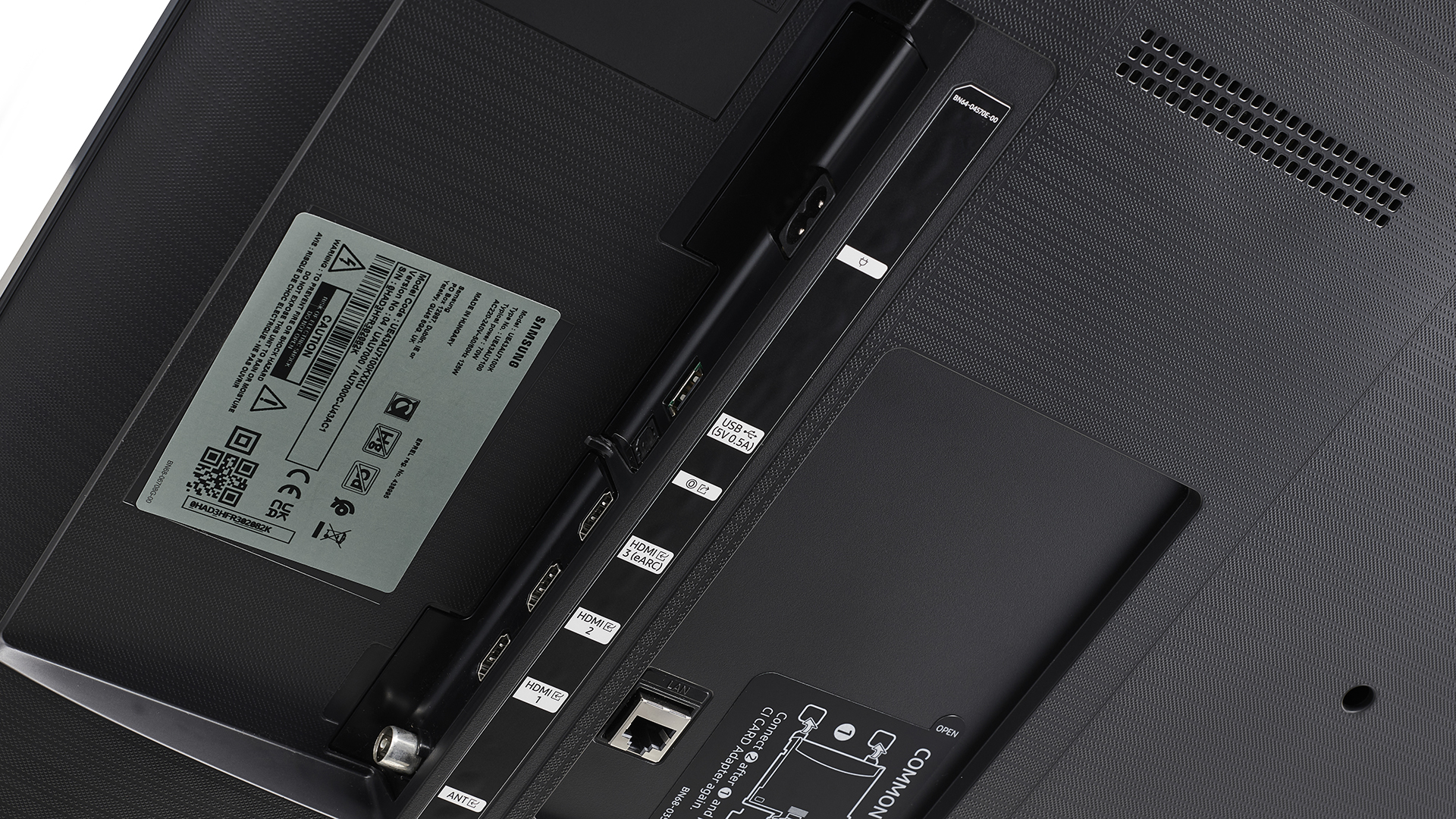
The UE43AU7100’s smarts come courtesy of Samsung’s latest Eden system. Built on the old Tizen mobile platform, Eden is a mostly impressive effort that scores highly for the comprehensiveness of its app coverage, its compact but still perfectly legible presentation, and the slickness with which it operates even on this relatively low-end set.
The only significant missing app is Freeview Play – but Samsung does still provide the catch up apps separately for all of the UK’s key terrestrial broadcasters. These appear alongside such smart TV stalwarts as Amazon Prime Video, Netflix, Now, YouTube, Rakuten, Apple TV and Disney+.
The UE43AU7100 doesn’t feature any built-in voice control support, but can be ‘linked’ to an Amazon Alexa or Google Assistant device if you have one.
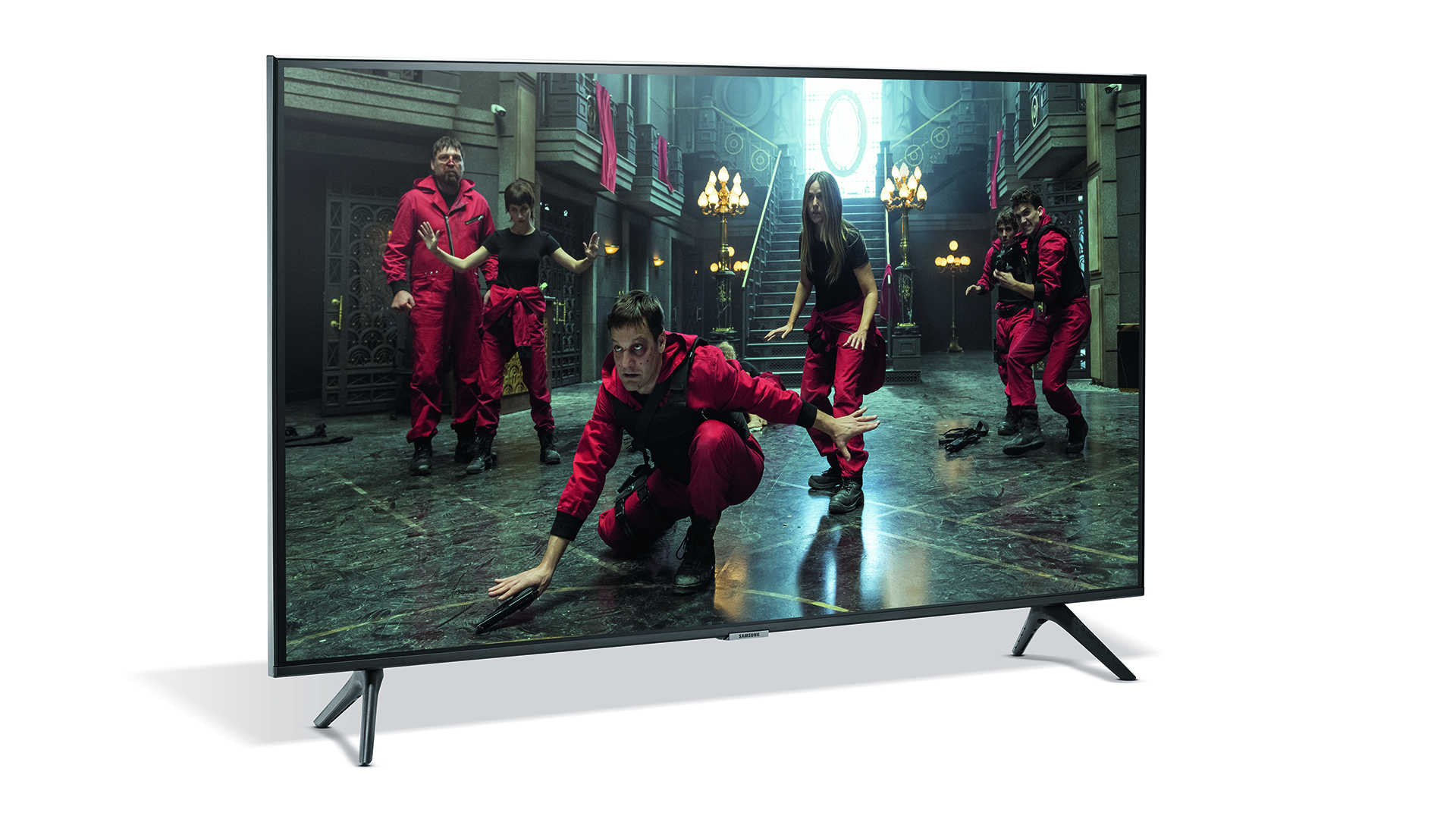
Screen type LCD w/ edge LED backlight
Resolution 4K
Operating system Eden (Tizen)
HDR formats HDR10, HDR10+, HLG
HDMI x3
4K@120Hz No
VRR No
ALLM Yes
ARC/eARC eARC
Optical out Yes
Dimensions w/o stand (hwd) 56 x 96 x 6cm
Samsung’s PurColor and Crystal Processor 4K combine to hopefully produce a wider colour range free of banding issues, while the processor is also reckoned to contribute to improved upscaling of sub-4K content and an adaptive sound system that can automatically adjust the TV’s audio profile to suit the type of content you’re watching.
The UE43AU7100 is built on a Vertical Alignment type of LCD panel, with edge LED lighting and a native 4K resolution. It supports the HDR10, HLG and HDR10+ flavours of high dynamic range, but as ever with Samsung, Dolby Vision is not on the menu.
Connections run to three HDMIs and one USB port. The only cutting edge gaming graphics feature the HDMIs support, though, is Automatic Low Latency Mode (ALLM), which allows the TV to switch into and out of its Game mode depending on the sort of content an ALLM-capable device is outputting. There’s no 120Hz or Variable Refresh Rate support.
One HDMI supports eARC, allowing the TV to pass lossless Dolby Atmos sound to compatible soundbars and AV receivers.
Picture
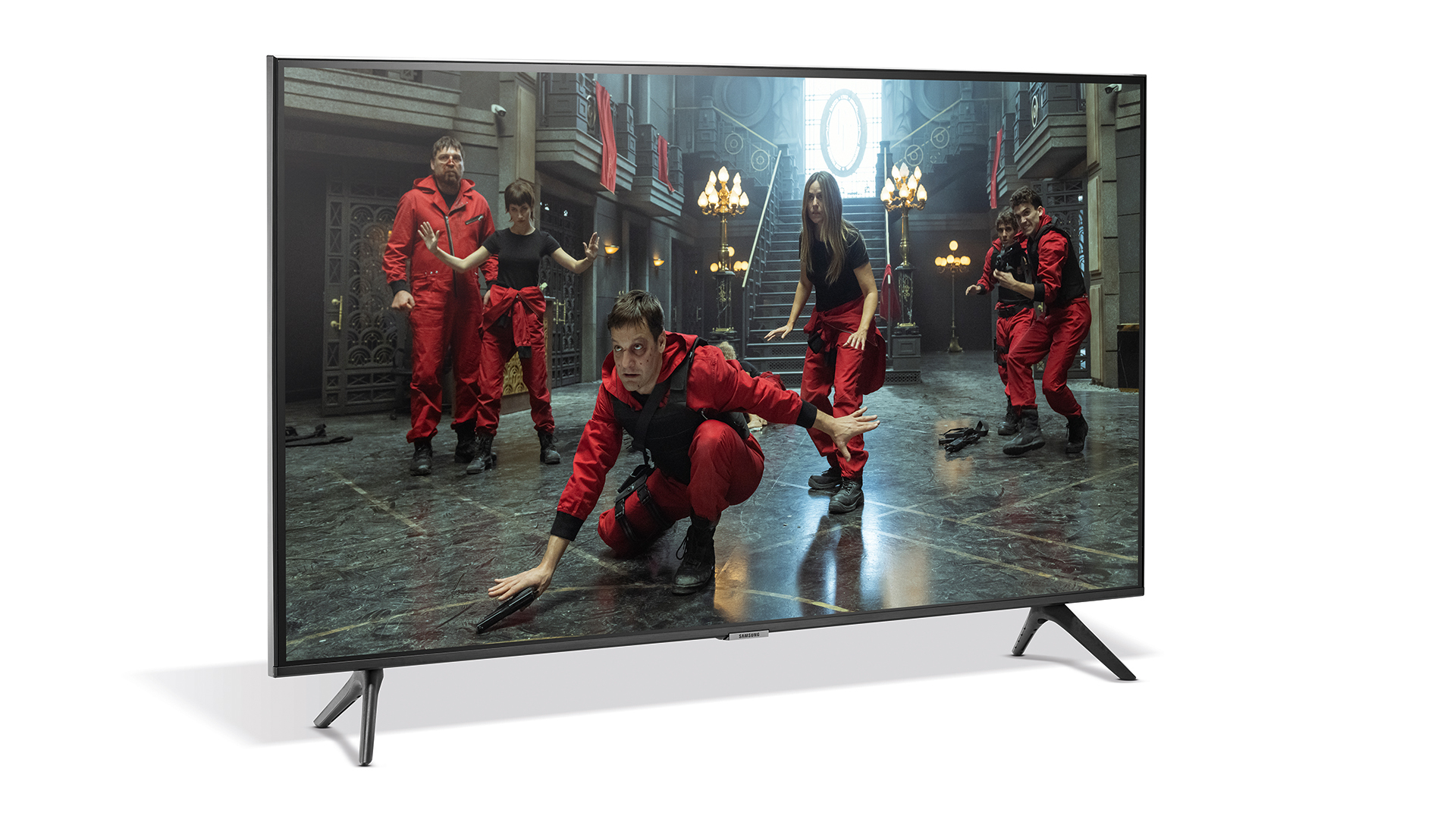
While inevitably for its money it’s not without its limitations, the UE43AU7100 delivers an impressively balanced, consistent and immersive picture.
Particularly great to see at this price point is how deep its black levels go. Dark elements of mixed light and dark images enjoy rich and deep black tones, while full-on dark scenes appear with startlingly little of that grey or blue wash over them that so often blights such scenes on relatively affordable LCD TVs.
Even the very toughest dark sequences in our 4K Blu-ray repertoire look convincing and cinematic. Especially as the impressively deep black tones are achieved with practically no interference from such common budget TV nasties as flickering brightness levels or areas of backlight clouding.
There is a little loss of subtle shadow detail in the darkest corners. That doesn’t mean dark scenes look hollow or forced, though; on the contrary, they look natural and retain a greater sense of depth of field than we’re accustomed to seeing on sub-£500 TVs. You can also bring some of the shadow detail back using a specific shadow detail adjustment in the TV’s menus – though you need to handle this with care, as it can also negatively impact the picture’s black level performance.

Good black levels are often accompanied by good colour, and so it proves – mostly – with the UE43AU7100. Colour blends are delivered with seriously impressive subtlety and practically no ‘banding’ problems. Also, while the set isn’t bright enough to drive colours off the screen with particularly spectacular volumes, there’s still an agreeable sense of daylight lustre to the tones of sun-drenched HDR woods, vibrant blue skies and busy city streets.
The UE43AU7100 can ‘clip’ a little subtle colour shading in the very brightest parts of HDR pictures, and shows signs of slight colour compression in certain dark HDR scenes. As Georgie talks to Pennywise in the drain near the start of It, for instance, Georgie’s face looks a little plasticky and flat due to the screen not being able to render a wide enough range of subtle skin tones. This issue only crops up quite rarely, though, and crucially it’s much less distracting than the sorts of flaw that afflict most rival sub-£500 TVs.
There are rival TVs, too, that can deliver both native 4K and upscaled HD images with more raw sharpness and apparent detail than the UE43AU7100. Again, though, the level of sharpness the UE43AU7100 adopts feels carefully chosen to deliver an organic, immersive image rather than an actual weakness of either the LCD panel or the Crystal Processor.
The sharpness holds up better than it does on most affordable TVs when there’s motion in the frame, too. Just make sure you don’t stick with the TV’s default Auto Picture Clarity setting, as this can cause messy digital artefacts around the edges of fast-moving objects. Instead choose Custom, and set the Judder reduction level to three or four.
While gamers might rue the UE43AU7100’s lack of 120Hz and VRR support, it’s worth saying that its Game mode gets input lag down to an exceptionally low 9.4ms. And even though it’s far from the brightest TV in its class, its core picture quality is still good enough to deliver a satisfying gaming experience.
The 43AU7100 even proves a little more tolerant of wide viewing angles than most budget LCD TVs, wrapping up a picture performance that trades showiness and aggression for immersiveness and consistency in a way we wholeheartedly endorse.
Sound
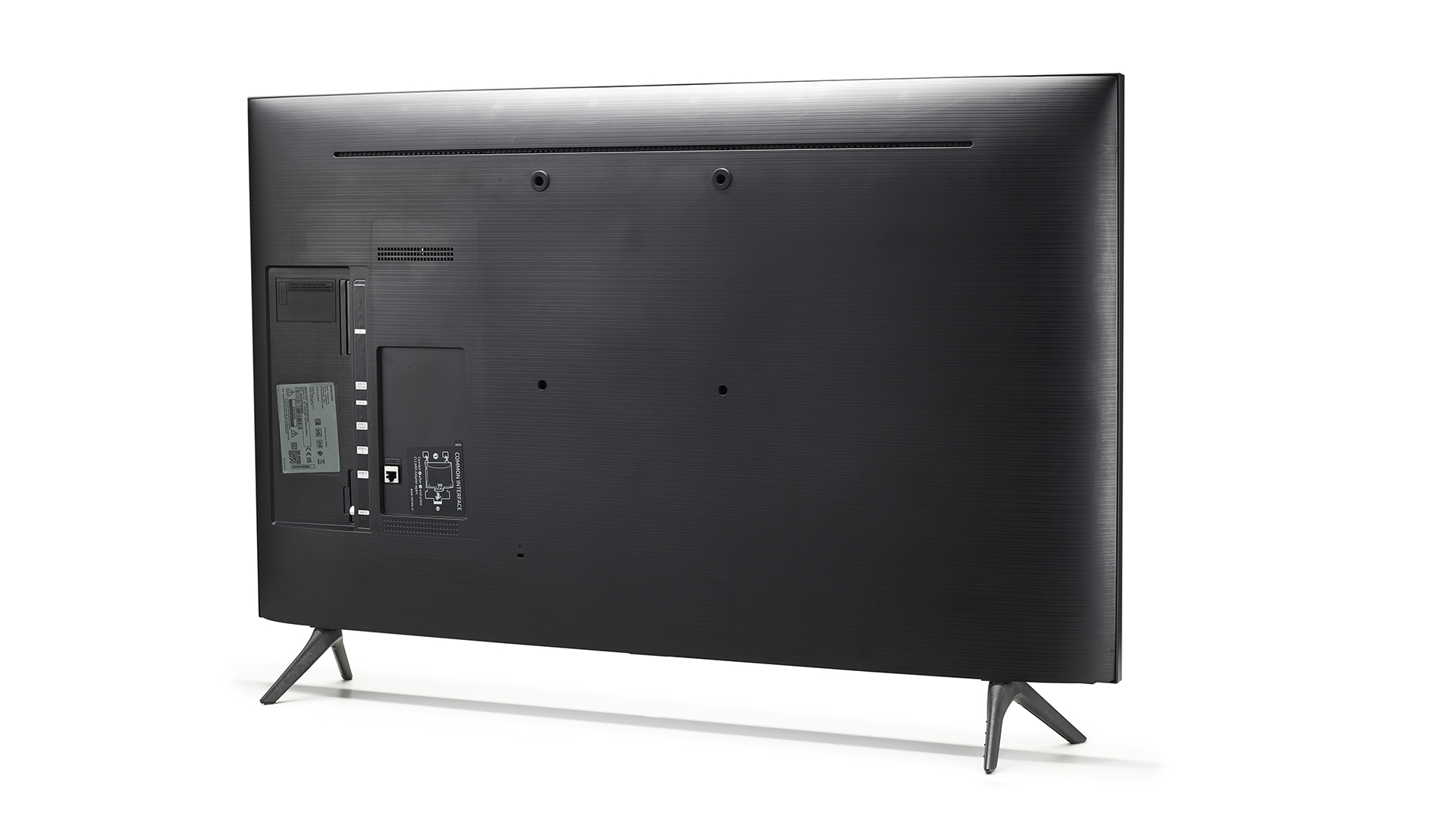
The 43AU7100 isn’t as accomplished with its audio as it is with its pictures. It still gets the job done, though, without breaking that sense of consistency that makes it so engaging.
Its biggest audio issues are that it doesn’t have much volume to play with, and doesn’t project the sound far at all beyond its bodywork. The result is a slightly small, ‘locked in’ sound stage that doesn’t have the headroom to keep escalating as we’d like it to during loud action scenes, and doesn’t fill your room or hit with much impact or attack.
Detailing is a little muted too. None of the drivers succumb to distortion, buzzing or crackling interference, however, and there’s a slightly thicker, meatier tone to the overall sound – especially if you activate the Amplify sound option – than many rival budget TVs provide.
Verdict
The UE43AU7100 doesn’t clamour for your attention on a crowded TV shelf or make any claims that it’s taking affordable TVs to places they’ve never gone before. You won’t see it turning up in any future ‘classic TV design’ exhibits, either.
What it does do, though, is show a level of maturity, confidence and understanding of the many elements that go into producing a truly satisfying TV picture that’s comfortably beyond anything else in its class right now.
SCORES
- Picture 5
- Sound 3
- Features 4
MORE:
Read our review of the Hisense Roku 50A7200GTUK
Read our TCL 55RP620K review
Consider our thoughts on the Samsung UE55TU8000
Here are the best TVs for under £1000
John Archer has written about TVs, projectors and other AV gear for, terrifyingly, nearly 30 years. Having started out with a brief but fun stint at Amiga Action magazine and then another brief, rather less fun stint working for Hansard in the Houses Of Parliament, he finally got into writing about AV kit properly at What Video and Home Cinema Choice magazines, eventually becoming Deputy Editor at the latter, before going freelance. As a freelancer John has covered AV technology for just about every tech magazine and website going, including Forbes, T3, TechRadar and Trusted Reviews. When not testing AV gear, John can usually be found gaming far more than is healthy for a middle-aged man, or at the gym trying and failing to make up for the amount of time he spends staring at screens.
